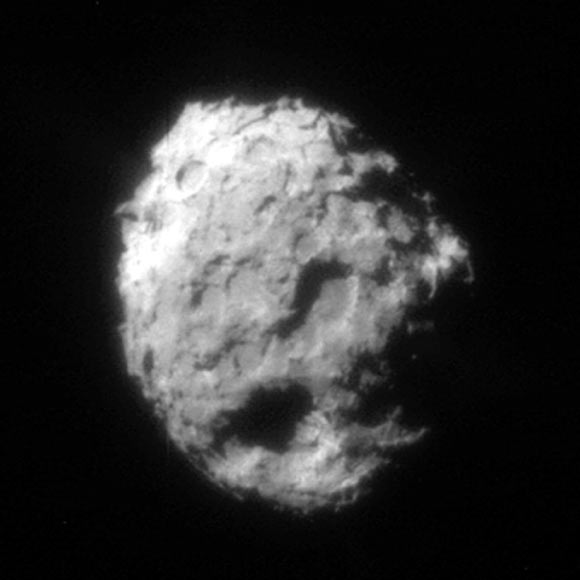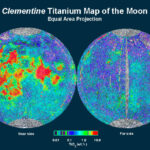NASA’s Stardust mission returned rocky material from the coma of comet 81P/Wild 2 (pronounced ‘Vilt 2’) to Earth on January 15, 2006. Comet Wild 2 contains volatile ices and likely accreted beyond the orbit of Neptune. It was expected that the Wild 2 samples would contain abundant primordial molecular cloud material — interstellar and circumstellar grains. Instead, the interstellar component of Wild 2 was found to be very minor, and nearly all of the returned particles formed in broad and diverse regions of the Solar Nebula. While some characteristics of the Wild 2 material are similar to primitive chondrite meteorites, its compositional diversity testifies to a very different origin and evolution history than asteroids. Collisional debris from asteroids is mostly absent in Wild 2, and it likely accreted dust from the outer and inner Solar System before dispersal of the Solar Nebula.
Wild 2 is a small comet with the shape of a flattened sphere and measures about 1.65 x 2 x 2.75 km (1.03 x 1.24 x 1.71 miles).
Discovered by Paul Wild on January 6, 1978, the comet has an orbital period of 6.2 years.
Wild 2 is known as a fresh periodic comet. It orbits the Sun between Mars and Jupiter, but it did not always travel the course of its orbit here.
Originally, this comet’s orbit lay between that of Uranus and Jupiter. On September 9, 1974, gravitational interactions between Wild 2 and Jupiter changed its orbital period from 43 years to 6.2 years.
“Eighteen years after NASA’s Stardust mission returned to Earth with the first samples from a known comet, the true nature of that icy object is coming into focus,” said Washington University in St. Louis researcher Ryan Ogliore, author of the new study.
“When Stardust launched in 1999, many scientists expected the comet’s rocky material would be dominated by the primordial dust that built the Solar System — the ‘stardust’ that gave the mission its name.”
“But the actual samples told a different story: Wild 2 contained a potpourri of dust that formed from different events early in the Solar System’s history.”
For Dr. Ogliore, the discovery that Wild 2 contained a record of ‘local’ events was exciting.
“The comet was a witness to the events that shaped the Solar System into what we see today,” he said.
“Kept in the cold storage of space for nearly its entire lifetime, the comet avoided alteration by heat and water seen in asteroid samples.”
“Comet Wild 2 contains things we’ve never seen in meteorites, like unusual carbon-iron assemblages, and the precursors to igneous spherules that make up the most common type of meteorite. And all of these objects have been exquisitely preserved within Wild 2.”
“After nearly two decades, it may seem like scientists have had plenty of time to analyze the minuscule amount of material returned by the Stardust mission: less than one milligram (picture a grain of sand).”
“However, this material is distributed over thousands of tiny particles on a collector the size of a pizza.”
“Nearly every Wild 2 particle is unique and has a different story to tell. It is a time-consuming process to extract and analyze these grains. But the science payoff is enormous.”
“Most of the Wild 2 particles are still unstudied and certainly hold many more surprises. As time goes on, the samples can be studied using new techniques that did not exist when the mission launched.”
“The Stardust samples, microscopic grains from a body less than two miles wide, contain a record of the deep past covering billions of miles. After 18 years of interrogating this comet, we have a much better view of the Solar System’s dynamic formative years.”
The study was published in the November 2023 issue of the journal Geochemistry.
_____
Ryan C. Ogliore. 2023. Comet 81P/Wild 2: A record of the Solar System’s wild youth. Geochemistry 83 (4): 126046; doi: 10.1016/j.chemer.2023.126046




